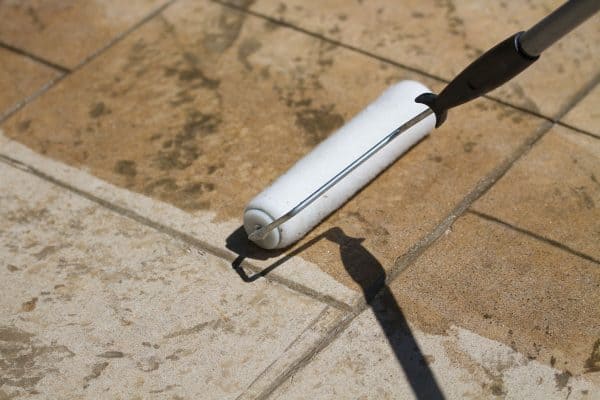Disclosure: We may get commissions for purchases made through links in this post.
You might be wondering if porcelain pavers can be installed atop a sand base. If so, what factors should you consider for a secure installation? Sit back and relax, because we're here to guide you! We've researched the answer thoroughly.
Yes, you can lay porcelain pavers on sand. Follow these steps:
- Clean the area and make sure it's dry.
- Spread sand over the entire area, then level with a trowel, wood, or soil compactor.
- Lay and align the porcelain pavers on the sand. Leave at least 0.25 inches of space between them, or use a spacer.
- Thump the pavers with a rubberized or wooden mallet instead of a steel hammer to avoid damage.
- Proceed to seal the joints.
Seal the paver joints to maximize stability and reduce moisture. This will prolong the pavers' lifespan. Your backyard is a good place to install porcelain pavers for elegance and safety. Before installation, you might need an assessment of the ground for possible leakage. It's essential to ensure the ground's quality to prevent issues in the future. You have a lot to learn from us. So, continue reading!
![Expert workman laying patio edging bricks in garden makeover - Can You Lay Porcelain Pavers On Sand [And How To Install]](https://pavingplatform.com/wp-content/uploads/2022/03/Expert-workman-laying-patio-edging-bricks-in-garden-makeover-Can-You-Lay-Porcelain-Pavers-On-Sand-And-How-To-Install-2-800x1200.png)
What Is Bedding Sand?
Bedding sand acts as a filtration layer beneath the pavers. It's able to prevent moisture from penetrating the surface. Sand will hold the pavers in place and keep the soil dry to restrict plant growth. Without sand, pavers might misalign.
How To Level Bedding Sand?
Leveling the sand is done to make the sand finer. Follow these steps:
- Using nylon or wood, surround the perimeter of the area.
- Spread the sand with a rake or shovel.
- You may use a dust compactor to make the sand finer. Or thump it to crush large granules.
- Use a leveling tool to flatten the surface, then start the paver installation.
Should You Wet Bedding Sand Before Installing Pavers?
You should not intentionally wet the bedding sand before installing pavers. Sealing afterward will harden the sand underneath so the pavers remain securely atop the ground. The sand may become muddy if you wet it before installation, resulting in inefficient stability.
What Kind of Sand Should You Use for Pavers?
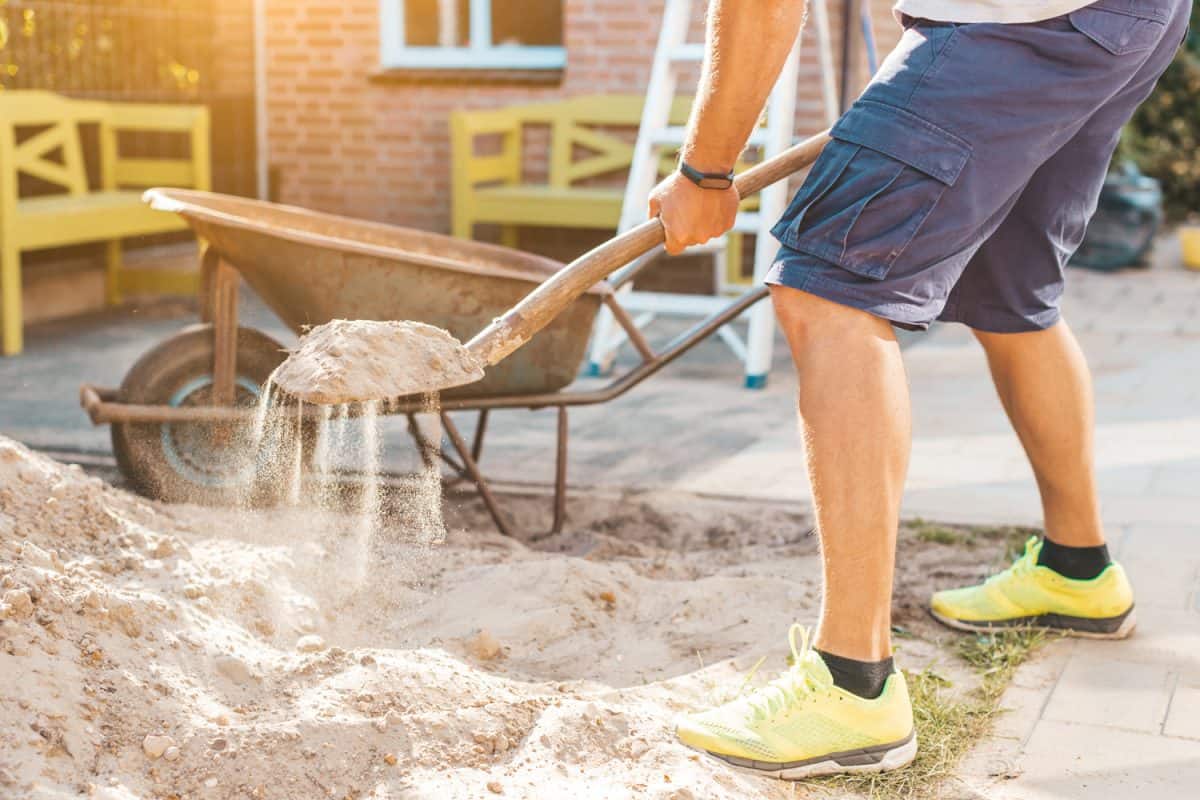
It's important to know what kind of sand will work best for porcelain pavers. Some of these kinds are rough, granular, and soft. You can choose any type as long as you accept its quality and the consequences of use. See below for the common types of sand:
Mason's Sand
Mason's sand is being quarried by crushing limestone, granite, and rocks. Its composition is used in major construction projects. Its granules are finer than concrete sand, giving it a smoother texture.
Polymeric Sand
Polymeric sand is hard when mixed with water. It's made by combining sand with polymer materials, like fiber and plastic, that settle when applied to a surface. Polymeric sand is flexible and can keep the pavers together. It's also used as a filler on paver joints.
See this polymeric sand on Amazon.
Washed Concrete Sand
It's called washed simply because of the filtering process that eliminates components such as clay, lime, plastic, and other materials. Washing is done to keep the sand firm when applied on a surface, which is a good way to lock pavers in place. However, one disadvantage of washed concrete sand is the difficulty of removing the pavers due to their tight hold.
Silica Sand
Silica sand contains silicon dioxide, which is found in ceramics, marble, enamel, and glass. It works well as bedding beneath the pavers. Although silica sand is expensive, it perfectly matches the texture of porcelain pavers and other similar materials.
See this silica sand on Amazon.
How Much Sand Do You Need?
The ideal depth of sand for pavers is at least 1.5 to 3.25 inches. So, to estimate the amount of sand you need, multiply the depth of sand by the width and length of the area. An average area of 10 square feet needs at least 70 to 120 pounds of sand. It's recommended to reserve extra sand in case you need more to fill up the area.
How to Seal Porcelain Pavers?
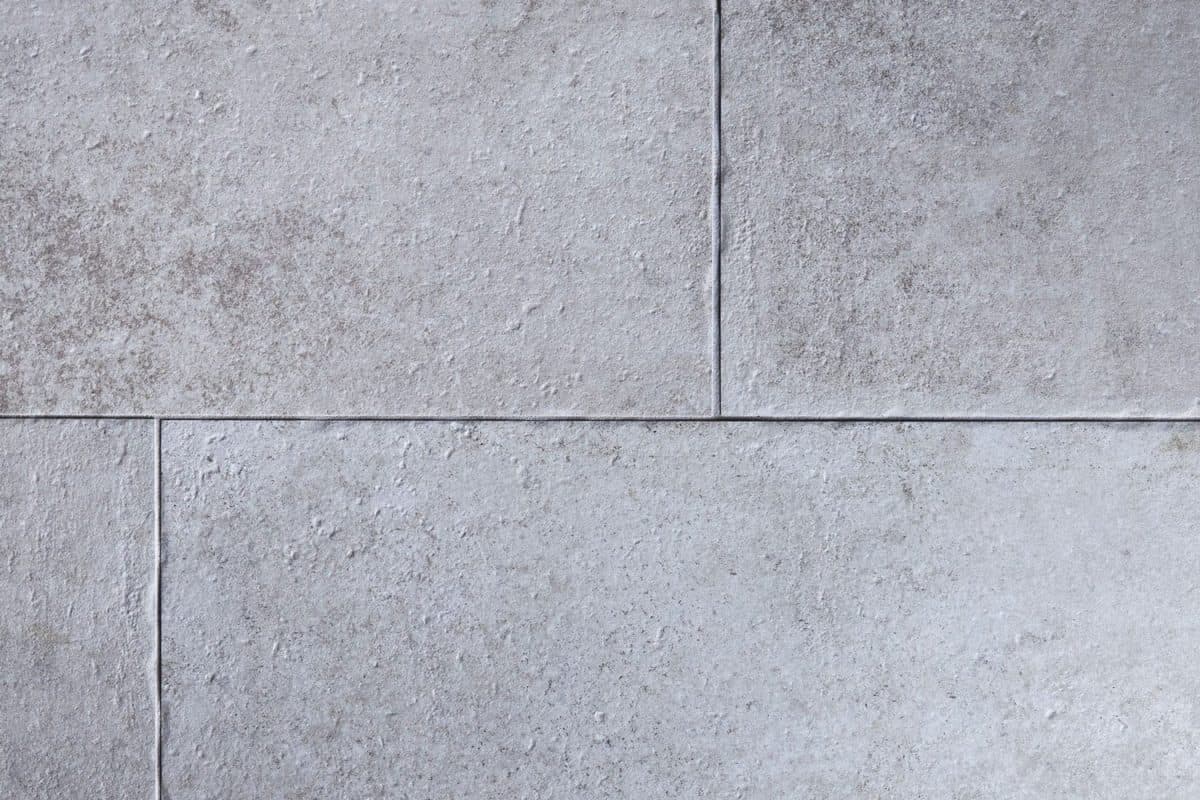
Sealing will improve the pavers' strength and restrain plant growth. Prepare these tools you need for sealing:
- Gloves
- Grout
- Scraper
- Trowel
- Wet sponge
See this ready-mix grout on Amazon.
Gloves are for protecting your hands from irritation. Grout is typically pre-mixed for convenience, made of sand, cement, and water. A scraper and trowel will be for applying grout, and a wet sponge will be for removing excess grout. Do not use a wet mop when removing excess grout, as this might harden the mop.
Steps to Grout & Seal Pavers
Once tools are prepared, continue to these steps:
- Clean the pavers with water and soap.
- Ensure the porcelain pavers are dry and dustless.
- Wearing gloves, apply grout to the paver joints.
- Use a wet sponge to wipe off excess grout. Let the grout settle and dry.
- Finish by cleaning the pavers with water and soap.
- To improve the appearance and prevent dust, apply a glossy or transparent sealant.
See this clean sealant on Amazon.
How Long Do Porcelain Pavers Last?
The lifespan of porcelain pavers can last for up to 50 years. The bedding sand plays an important role in prolonging the quality of porcelain pavers. The firmer the hold, the stronger the pavers can be. Sealing the pavers can promote water resistance, which restricts grass or weed growth. These enhancement methods can keep the pavers long-lasting.
Should Sealant Be Reapplied?
It's not necessary to reapply sealant on a scheduled basis, as this may thicken its layer. But you can do this when there's damage. However, the sealant may lose its grip with pavers as time passes by. If this happens, reapply sealant after cleaning the pavers.
How to Repair Porcelain Pavers?
Porcelain pavers will get damaged. There are different ways to repair porcelain pavers depending on the damage. See the repair steps for some of the common types of damage.
Cracks
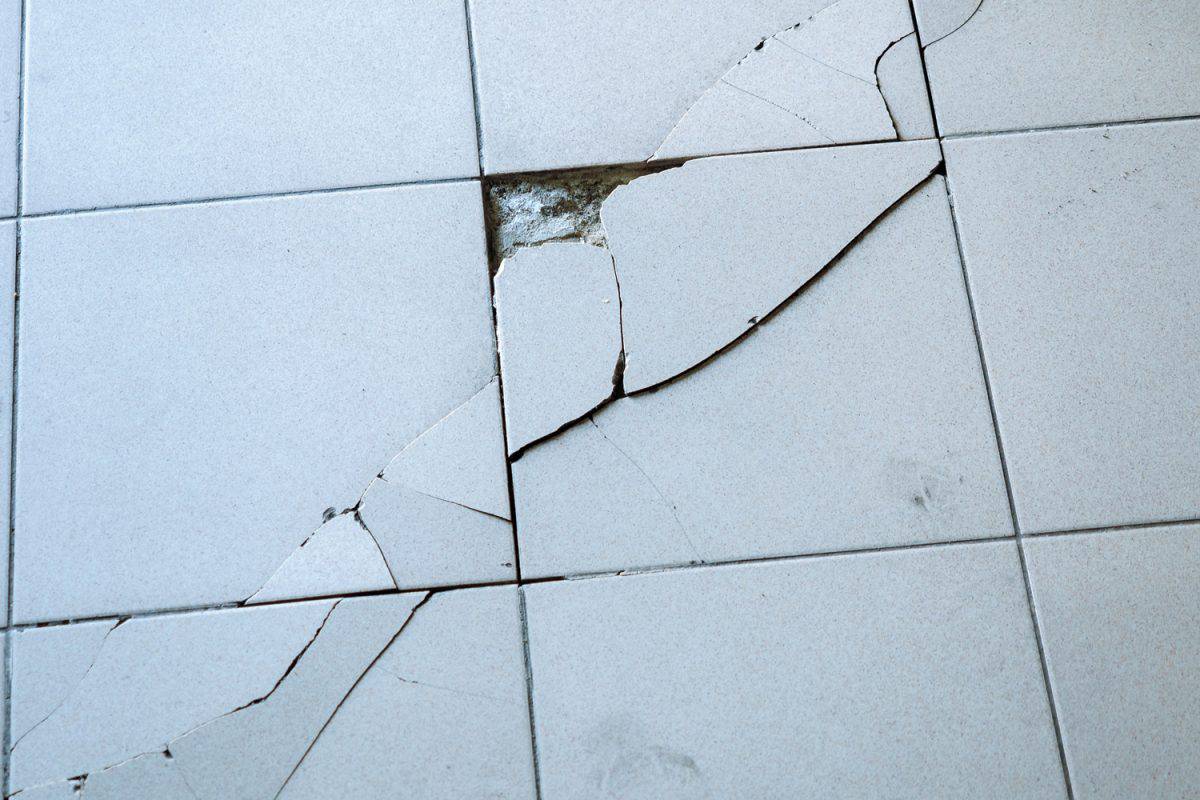
Cracks are dangerous when ignored. People might trip over them, which can cause injury. To fix a crack, you could use silicone caulk or liquid sealant. However, the appearance may change due to the color of the sealant applied.
See this silicon caulk on Amazon.
Hollows
Hollows are formed by external impact and pressure. You may use a concrete mixture to fill in the hollow. Just apply the mixture and flatten the surface. Blend the color with paint.
Protrusion and Sinking
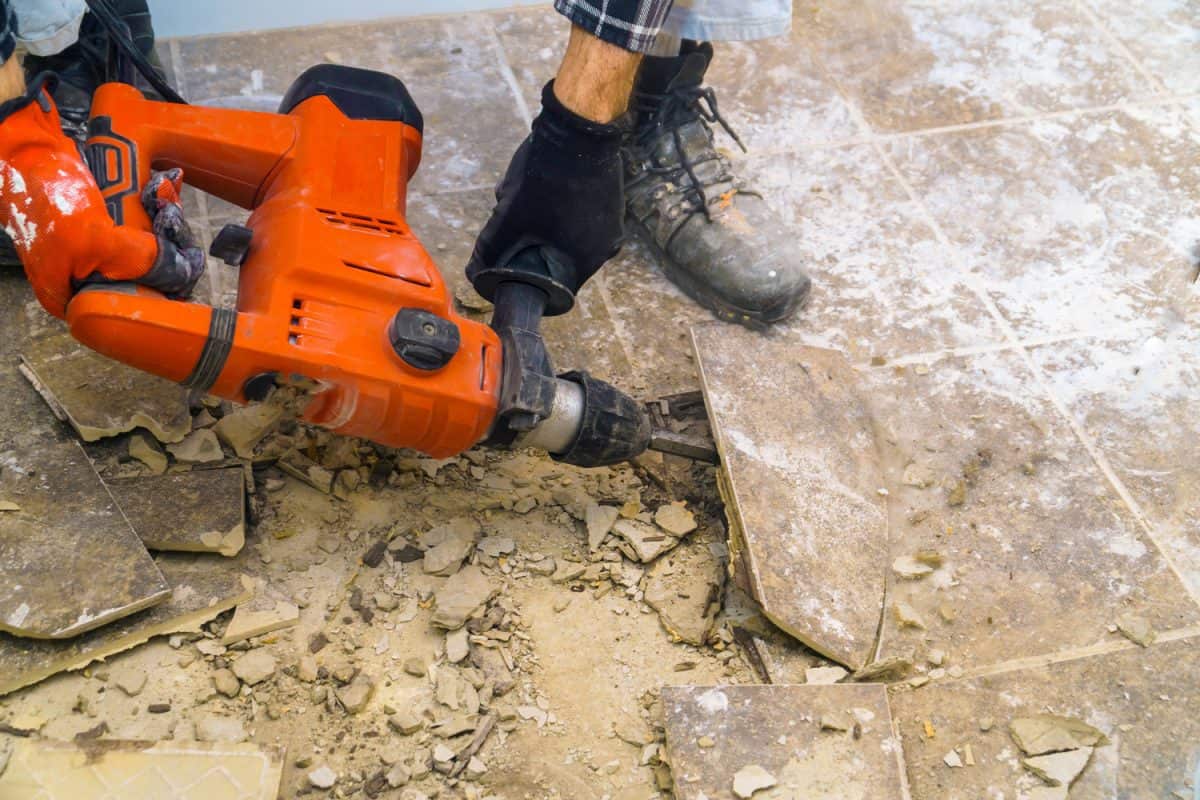
A protrusion is caused by uneven bedding sand pushing the pavers upward. On the other hand, sinking is due to the softening of sand or soil underneath. On the other hand, pavers may sink due to soft soil beneath them. To fix it, remove the pavers with a tile cutter or driller. Dry out the area, then pour the sand with the proper layering. Put back the pavers and seal them.
Can Porcelain Pavers Get Hot?
Yes, porcelain pavers can get hot since they are made by heating clay. They will not break against heat and fire, but they can be too hot underfoot from sitting beneath the sun. The fragility, texture, and components of porcelain pavers are factors affecting their temperature.
How to Keep Porcelain Pavers Cool?
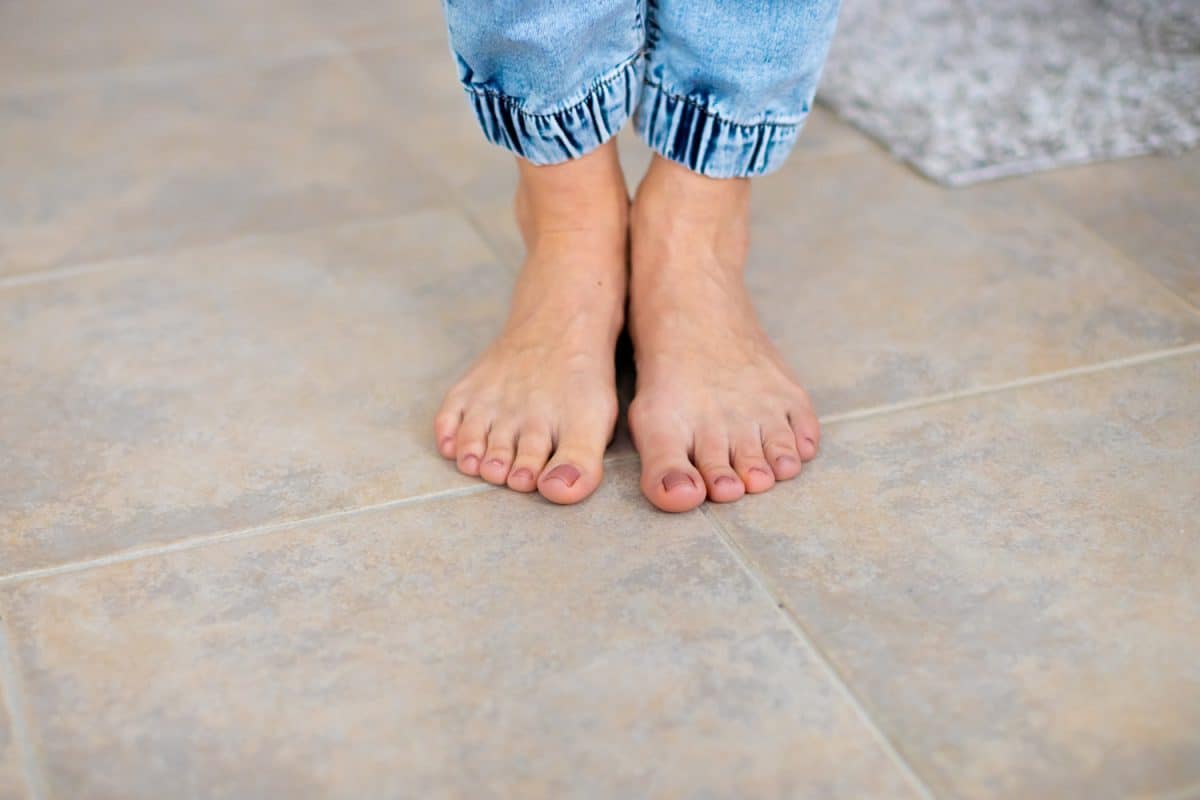
Aside from the sun's heat, the accumulation of dust on the surface can heat up the pavers. Of course, there are ways to keep porcelain pavers from warming. You can refer to these cooling techniques:
Water Treatment
It's the most common way to cool pavers' temperature. Simply spill or spray water throughout the area and you'll notice the water vapor rising from the surface. Sweeping and frequent cleaning can also help cool down the surface. You might also pressure-wash the pavers.
Ventilation
It's nice to have a ventilation system to keep the air breathable and safe. You could install fans to circulate the air throughout the area. Ventilation will keep the pavers' temperatures cooler.
Roof Installation
You might also install a roof or sunshade over the pavers to block sunlight, and rain as well. The roof will keep the air mild due to reduced heat transfer, resulting in cooler pavers. Roof installation may be costly, but it can help you a lot because aside from protecting the pavers it can keep you cooler and protect your skin from UV rays while you enjoy the hardscape.
Plant Decorations
You may notice your neighbors placing potted plants along their sidewalk. Beause plants create oxygen and absorb sunlight, they will help the pavers cool down by redirecting the heat. Select plant varieties that prefer direct sunlight. You just have to be observant as plants may be attractive to pests, like ants, that may inhabit paver joints.
Conclusion
Start by laying porcelain pavers on the sand. Pavers will protect the ground from moisture, heat, flooding, and mud. Just choose what type of sand will be best used with your pavers, and you'll experience safer ground.
There's more to learn from us! Visit these articles for related information:






![Vibrant Red Paver Stone Path, Can You Spray Paver Sealer? [How To Apply It]](https://pavingplatform.com/wp-content/uploads/2022/04/Vibrant-Red-Paver-Stone-Path-600x400.jpg)
![Properly laid out red pavers for a garden, Can You Tint Paver Sealer? [And How To]](https://pavingplatform.com/wp-content/uploads/2022/04/Properly-laid-out-red-pavers-for-a-garden-600x400.jpg)
